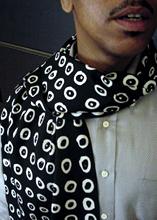Our vision is to combine African traditional textiles and Japanese Kimono craftsmanship to create modern classics. In both African and Japanese cultures, truly great textiles were family heirlooms passed down from one generation to the next. Only the most beautiful fabrics of the highest quality got passed down. Inspired by these great cultures, we want to combine their achievements to make "modern heirlooms".
For us, a modern heirloom is a textile of a classic beauty and of a quality to last for decades. We take only the truly classic designs from the great Yoruba, Kuba, and Malian textile traditions--designs that have passed the test of time--and combine them with the same superior quality silks and dye process used to make $20,000-kimonos (we use exactly the same techniques, craftspeople, and dye houses). We use kimono craftspeople, because, frankly speaking, they are best in the world.
Our long-term goal is transfer these dyeing and stenciling techniques to African craftsmen and craftswomen so that they can make these high-end textiles themselves. We also hope to help these African dyers gain access to a premium global market for their work. Plans call for beginning this technology transfer to dyers in Nigeria and Ghana over the next three years.
Please check out this small
TV show segment made about me and the "Africa meets Japan" concept. It is mercifully short, and I believe interesting and informative.
Also visit our online store. We have quite a few of our scarves there and we plan to list more soon. We hope you'll find a few items that interest you.
